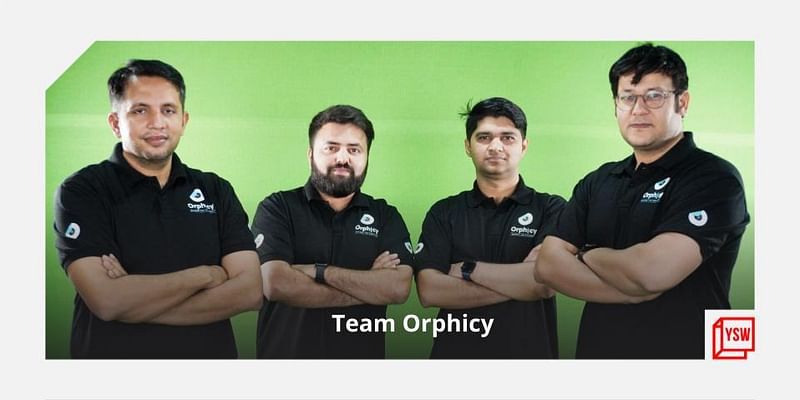Buddha in Business: Are you an enlightened entrepreneur?
Janaki Rajagopalan

Friday September 21, 2018,
6 min Read
What is the Buddhist doctrine and how does it help the entrepreneur – here’s the first in our twelve-part series...
Like most religions, Buddhism has been about good tenets for good living. Obsessed as we are with entrepreneurship, we were curious to explore whether a Buddhist approach would help entrepreneurs build and implement logical, vision-aligned business models.
The questions we asked ourselves were: Can an entrepreneur embrace the Buddhist way of thinking to build a lasting enterprise? Is it possible to dovetail Buddhist framework into the ten building blocks of the business model itself and build a robust entrepreneurial practice? And if it is possible, what are the takeaways for the entrepreneur and his habitat?
As we delved deeper into the Buddhist doctrine we realized that indeed this could be an amazing blueprint for entrepreneurship.
Lets’ start by defining the Buddhist framework. We do so in in simple layman terms, but without stripping it of its essence.
The Buddhist framework comprises of four truths. Call them truth. Call them fact. Call them reality. Call them Vision. They are:
• Pain
• Origin or source of pain
• How to put an end to pain; and
• How to embrace a path where pain can be avoided.
Buddhism didn’t just extol that pain is par for course for humanity. It also charted a blueprint for overcoming pain constructively and turning it into gain, which in management terms is called ‘Mission’. It is the to-do list for actualizing your vision.
This consists of eight guide posts:
• Right view
• Right thinking
• Right speech
• Right action
• Right livelihood
• Right diligence
• Right mindfulness and
• Right concentration.
Vision
Let’s look at the vision first. What is vision?
Again in layman terms, vision is the organization’s way of articulating why we do what we do. In other words, what is the pain we see in the life of our customers, and how we want to alleviate that pain with our product.
Let’s take a look at the vision of my favourite brand, IKEA. "At IKEA our vision is to create a better everyday life for the many people. Our business idea supports this vision by offering a wide range of well-designed, functional, home furnishing products at prices so low that as many people as possible will be able to afford them.”

Ikea's vision is to create a better everyday life for people.
Let’s understand this vision within the Buddhist framework.
Pain: The furniture available in the market was very clunky and more suitable to large homes. And clunky furniture was expensive, both to buy and to transport to their homes from warehouses situated on city outskirts. And they no longer fitted in homes that had shrunk in size as joint families had broken up.
Source or origin of the pain:
World War II and the subsequent depression had eroded the economy in Europe and had resulted in the following--
• Hardly any disposable income for luxuries such as furniture.
• Reduced family size, which in turn necessitated smaller living spaces.
• Smaller living spaces meant the need for modular furniture, which did not overwhelm the physical space.
• Well-designed modular furniture available at that time was very expensive.
• Even if they could afford to buy, the cost of transporting from the warehouse to their homes was prohibitive as fuel was in short supply after the war.
How to put an end to pain:
• By designing innovatively, keeping small spaces in mind
• By ensuring that good innovative designs did not come with a hefty price tag.
• By designing the furniture in a modular do-it-yourself mode so that even a four-seater dining table could simply be loaded into your own small car and you could assemble it at your home.
How to avoid pain:
• By ensuring that with well-designed, affordable furniture, customers’ convenience was given primacy over everything else. And in the process every customer became an IKEA evangelist.
Now let’s see how the blueprints of the brand achieved this vision...
• Right view: They understood the pain, what was causing the pain, how their product could alleviate that pain and how to enable a whole society to avoid that pain, bang on.
• Right thinking: They figured good design did not mean hefty price tag. Good designs should be the prerogative of every one and not just the privileged members of society.
• Right speech: Their entire customer messaging was aligned to this vision. One of their famous campaigns was ‘champagne at beer prices’
• Right action: They designed furniture for smaller spaces, which looked great and functioned great. They designed them as DIY kits which their customer could load into his own car and transport without paying an arm and a leg for transporting it.
• Right livelihood: One of the most interesting things about the brand besides their designer products, was the tag that each product carried, which contained a little description about the product- what is it meant for, why it was designed the way it was, who designed it, what raw material was used in making it and why. The product’s value chain was communicated very effectively and I know this for a fact that this little product story somehow forged a poignant connect between the customer and the craftsman. The customer felt as proud of the product as the craftsman did. And in feeling so, elevated the product to a piece of art and the craftsman became a revered artist.
• Right diligence: There was absolutely no inconsistency in any of the things that were done. Not a word was misplaced or misdirected from the vision.
• Right mindfulness: Their customer discovery and profiling was a science in itself and they ensured that the customer did not feel short-changed on any count – be it in the design, in the price or in the product’s utility promise.
• Right concentration: At every step the company ensured that it was way ahead of the curve in anticipating the changing society and thereby the dynamic nature of the wants of their customers.
Can your business vision be built around the four truths of the Buddhist framework with ease and conviction? Does it provide the garuda dhrishti (eagle eye, meaning, the 30,000 feet view) even as it remains mindful of the sarpa dhrishti (snake view, meaning, view at the ground level)? Does your plan integrate the right view, thinking, communication and action to provide the right livelihood with diligence, mindfulness and concentration?
If your answer is yes, great! You are well on your way to being an enlightened entrepreneur. If you are not sure of your answer, we invite you to join our caravan for the next eleven weeks.




